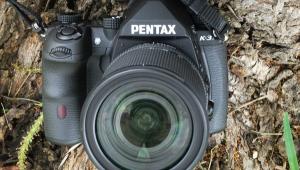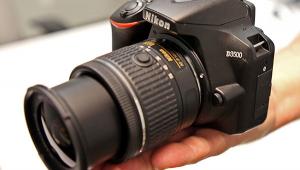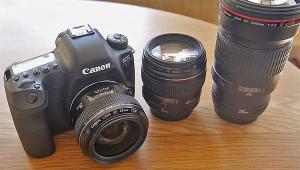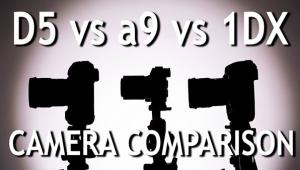Canon EOS Rebel T4i DSLR Review
The Canon EOS Rebel T4i offers the same sensor resolution of 18MP as its forerunner EOS T3i, but shows a lot of improvements in handling and functionality due to a new image sensor and a new image processor. The camera is Canon’s first D-SLR with a touchscreen. This screen is very large (3”) and has a very high resolution of 1,040,000 RGB dots. It is a swivel monitor that can be flipped up- and downward and tilted to the front (for self-portraits). Even though it is a touchscreen, the whole handling of the camera (menu structure, parameter setup) is still oriented on Canon’s SLR handling scenario. In contrast to many compact cameras with touchscreen-oriented operation, the touchscreen isn’t mandatory, but it’s still helpful.



The camera has a new Hybrid CMOS sensor with integrated AF sensors. The Canon still uses a nine AF field (nine cross-type sensors) for focusing, but is also able to use the additional AF system for video recording. (One of the problems of video recording with SLRs is the AF system: when the automatic system tries to change focus setting while recording the process is often very bumpy or jerky. Combined with the new STM lens system, it is much smoother and even faster than a standard contrast metering and lens setup.)


The camera is able to export an uncompressed video via its HDMI port without any overlay information. This allows users to record videos in higher quality, even though there are some issues. The HDMI output/recording is only available for a few seconds, but may help in studio/green screen situations, for example.
Known as the Canon 650D in Europe, the T4i uses the new DIGIC 5 image processor (already used by Canon’s current professional SLRs) which helps it record up to 5 frames per second in burst mode. All operations (parameter setup, shooting) have an enhanced and faster “feeling.”


Image Quality
Color: The color errors are on an extremely low level for an entry-level camera. The T4i reproduced nearly all color nuances with perfect saturation; only red colors are slightly boosted and show less differentiation than other colors (see the red-colored T-shirt in our portrait test shot or the red brushes in our standard test box shot). The automatic white balance system did a real good job and showed only minor tendencies into cooler colors. Nevertheless, the light gray background in the standard portrait shot is a bit bluish. Skin tones are reproduced very naturally with a slightly high magenta rate.
Sharpness: The T4i did a great job in the resolution tests. It reproduced the test chart with 3426 lines per picture height, which is nearly the nominal resolution of 3456 lines per picture height. Fine details are reproduced clearly and crisply, as you can see in our test images. Using the 17-40mm lens, even image corners are crisp and clear. The resolution results with the new 40mm STM lens are slightly lower (about 3000 lines per picture height).
Noise: The T4i showed very good performance in our noise tests. The luminance noise is very low and stays under y=1.0 up to ISO 3200. The color noise is nearly invisible in images taken at ISO 100 to 1600, and will then show some color clouds (a combination of image noise and anti-noise filtering), but these artifacts are still on a very low level.

The dynamic range is very high: the camera gained a maximum of 10.9 f/stops and keeps the high level (> 10 f/stops) up to ISO 1600.
The Canon EOS Rebel T4i with the 18-135mm STM kit lens has a list price of $1199. For more information and further tech specs, visit: www.usa.canon.com.
Pro
• New Hybrid CMOS
• Very good image results
• Swivel monitor
• Touchscreen for easy handling
• Sophisticated Full HD video capabilities
Con
• Somewhat high saturation of red nuances, which reduces differentiation in these colors
Image Tech
Image Tech is where we publish web-exclusive lab reports on cameras. To read the reports please go to the Shutterbug homepage at www.shutterbug.com and click on the Image Tech tab on the top navigation bar. New reports are published frequently, so check Image Tech for updates.
MORE CANON REVIEWS ONLINE
Go to the Image Tech tab on our homepage (www.shutterbug.com) to read more Canon camera reviews, including the G1 X, 5D Mark III, and EOS-1D X.
Lab results and test images by BetterNet, our TIPA-affiliated testing lab. Edited by George Schaub.
















































